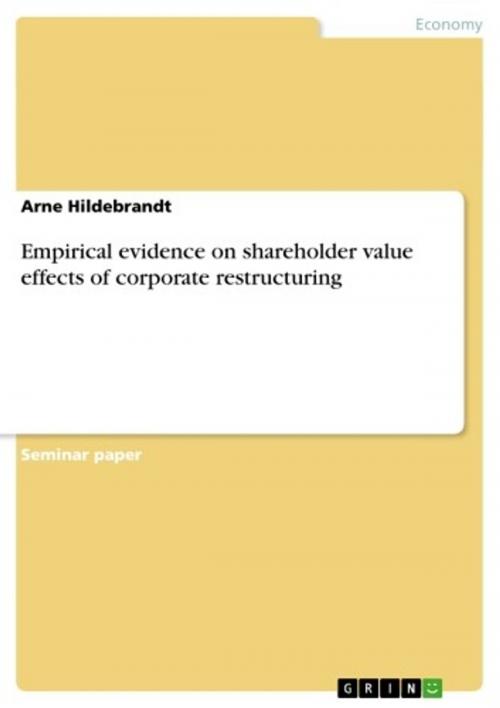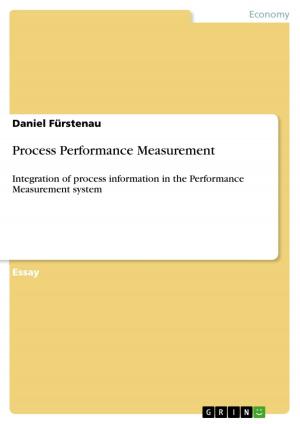Empirical evidence on shareholder value effects of corporate restructuring
Business & Finance, Finance & Investing, Finance| Author: | Arne Hildebrandt | ISBN: | 9783638367011 |
| Publisher: | GRIN Publishing | Publication: | April 16, 2005 |
| Imprint: | GRIN Publishing | Language: | English |
| Author: | Arne Hildebrandt |
| ISBN: | 9783638367011 |
| Publisher: | GRIN Publishing |
| Publication: | April 16, 2005 |
| Imprint: | GRIN Publishing |
| Language: | English |
Seminar paper from the year 2004 in the subject Business economics - Investment and Finance, grade: 2,0, European Business School - International University Schloß Reichartshausen Oestrich-Winkel, 45 entries in the bibliography, language: English, abstract: It is the goal of this paper to provide an overview of empirical studies that might give evidences on how shareholder value responds to different modes of restruc-turing. Due to the restriction in pages, this study will give an insight in different modes of restructurings but will not go into detail on how corporate restructuring influences the shareholder value for specific regions or industries. Rather, the aim is to present a compact picture of the restructuring results which serve as an 'appetizer' for further in depth readings about this topic. To do so, this paper will approach the subject step by step: The first part of this paper deals with fundamentals of corporate restructuring. It de-fines the term 'shareholder value' and explains different approaches of how an effect of corporate restructuring can be measured monetarily. Furthermore, the term 'corpo-rate restructuring' and the different changes in the firm's portfolio, organization, or capital structure are described and categorized in an easily memorable model. The second part of the paper presents different important empirical studies of whether and how restructuring effects shareholder value. The model, described in the first part, is being employed to structure these findings and is being combined with the positive or negative impacts of the conducted method of restructuring. Lastly, the third part will briefly summarize the introduced effects on shareholder value and will give advice as to which forms of restructuring should be accomplished to enhance the overall economic performance of the firm and therefore the shareholder value.
Seminar paper from the year 2004 in the subject Business economics - Investment and Finance, grade: 2,0, European Business School - International University Schloß Reichartshausen Oestrich-Winkel, 45 entries in the bibliography, language: English, abstract: It is the goal of this paper to provide an overview of empirical studies that might give evidences on how shareholder value responds to different modes of restruc-turing. Due to the restriction in pages, this study will give an insight in different modes of restructurings but will not go into detail on how corporate restructuring influences the shareholder value for specific regions or industries. Rather, the aim is to present a compact picture of the restructuring results which serve as an 'appetizer' for further in depth readings about this topic. To do so, this paper will approach the subject step by step: The first part of this paper deals with fundamentals of corporate restructuring. It de-fines the term 'shareholder value' and explains different approaches of how an effect of corporate restructuring can be measured monetarily. Furthermore, the term 'corpo-rate restructuring' and the different changes in the firm's portfolio, organization, or capital structure are described and categorized in an easily memorable model. The second part of the paper presents different important empirical studies of whether and how restructuring effects shareholder value. The model, described in the first part, is being employed to structure these findings and is being combined with the positive or negative impacts of the conducted method of restructuring. Lastly, the third part will briefly summarize the introduced effects on shareholder value and will give advice as to which forms of restructuring should be accomplished to enhance the overall economic performance of the firm and therefore the shareholder value.















